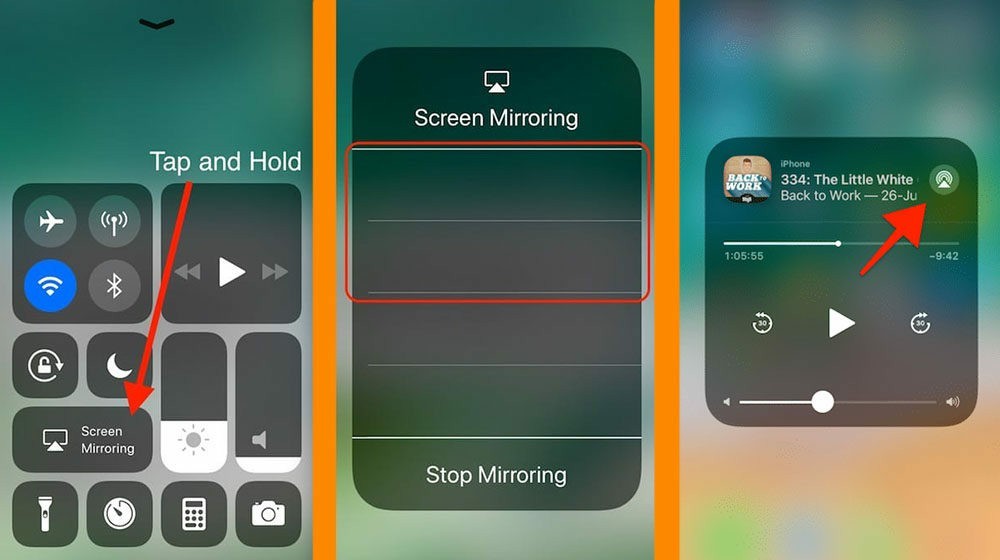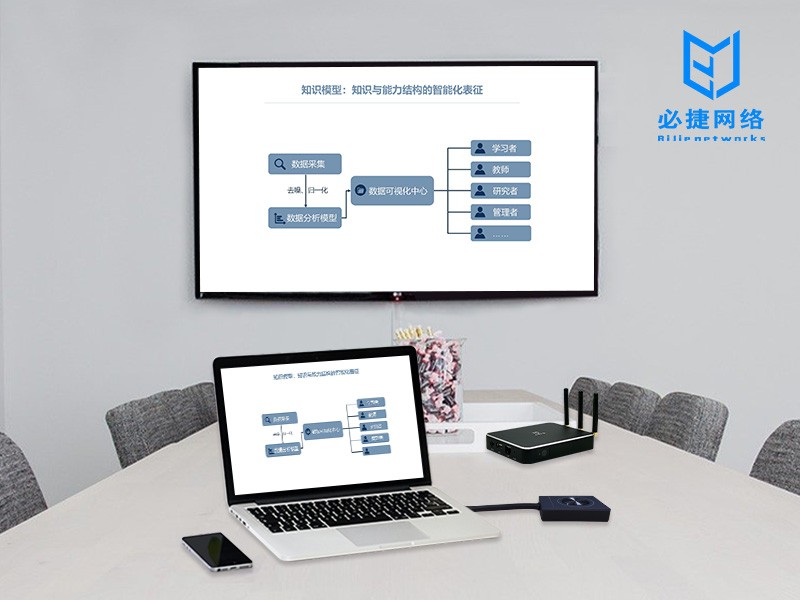and “wireless screen projection” are also called wireless screen transmission and wireless same screen, which means that the smartphone, pad or PC client displays the screen image and sound of the machine on another display device through WiFi to realize the same screen interaction. Generally, wireless screen transmission protocols such as miracast, airplay, widi and DLNA are adopted, and some technology companies also develop private protocols to realize it. At present, wireless projection screen is mainly used in intelligent conference room, intelligent classroom, product launch and other occasions that need to be shared with the same screen and multi screen interaction.
general system wiring diagram of wireless screen projection:

intelligent terminal access mode:
Android system intelligent terminal
has two implementation modes: miracast and private protocol
1) Android 5 The intelligent terminals of systems above 0 are equipped with miracast wireless screen projection function. By turning on the wireless display function (mobile phones of different brands may be under different menus), miracast is characterized in that it does not need to rely on WiFi LAN connection, and the screen is projected directly through Wi Fi direct. Miracast has high requirements for the adaptability of network card, which generally needs to be adjusted at the hardware driver level, and has high requirements for the hardware design manufacturer of screen projector.

2) the private protocol is easy to understand. Generally, it is necessary to install the wireless projection transmitter app on the Android intelligent terminal. At the same time, there should also be the corresponding receiver app on the wireless projection device. The two must be used together.
IOS system intelligent terminal
and
IOS devices are mainly projected through airplay. Airplay is a wireless technology developed by apple, which can wirelessly transmit pictures, audio and video on IOS devices such as iPhone, iPad and iPod touch to airplay supporting devices through WiFi. Now some traditional home cinemas and hifi, such as the new power amplifiers and network players of maranz and Tianlong, have supported the airplay function. Airplay also has a very powerful function, which is called airplay image. Combined with the wireless projection box supporting airplay (at present, except Apple TV, domestic wireless projection boxes are basically realized by cracking airplay), it can wirelessly transmit the pictures on iPhone or iPad to the TV, that is to say, what your device displays is what the TV screen displays, not limited to pictures and videos.

window system PC
Windows computer has three wireless projection modes: widi, software and USB hardware.
1) widi screen projection: widi is the built-in wireless screen projection display function of windows10 computer (not necessarily supported by WiFi network card installed later). It is improved based on miracast protocol. Win10 users can carry out wireless screen projection very conveniently. Personally, I think this is the most convenient way of computer screen projection at present.
2) software projection: the projection is mainly carried out by installing the software at the transmitting end and receiving end, and the projection needs to be carried out with the help of local area network. The advantage is that it can realize the same screen sharing of the whole network. In theory, it can reach the network, that is, it can reach the screen.
3) USB button projection: it is necessary to add an additional button hardware of USB interface. Click the button to grasp the PC display screen. After hardware coding, it is transmitted to the projection box for decoding and display through WiFi network. The advantage is one click projection and fast display; The disadvantages are the need to add hardware, the need for adaptation before use, and the price is not cheap.

Mac OS PC
Mac computer mainly performs wireless screen projection through airplay and USB hardware, and the use method is similar to the above.
and
wireless projection, as an important part of intelligent office, have been more and more involved in enterprise information management planning. The application of wireless projection is the most intuitive embodiment of the pursuit of efficiency and convenience in enterprise office. At the same time, it also puts forward higher requirements for the function and stability of wireless screen projection equipment, supporting richer multi screen interactive scenes, higher output resolution and higher product stability, which is also the pain point that users are most concerned about. At the same time, this is also a new opportunity and challenge. Whoever can take the lead in solving the pain points of users will stand out in the subdivided industry of wireless projection.
Suzhou Bijie Network Co., Ltd. (hereinafter referred to as Bijie) is a leading provider of enterprise intelligent office and intelligent education products and solutions. It is committed to helping enterprises and educational customers improve office learning efficiency, solve communication and management problems and make everything easier with wireless projection, multi screen interaction and rich intelligent office and intelligent education products.